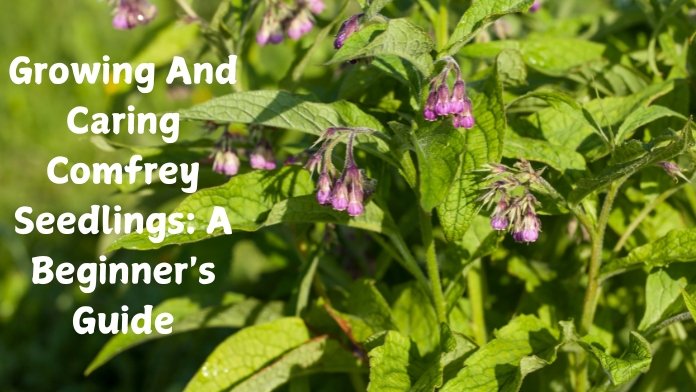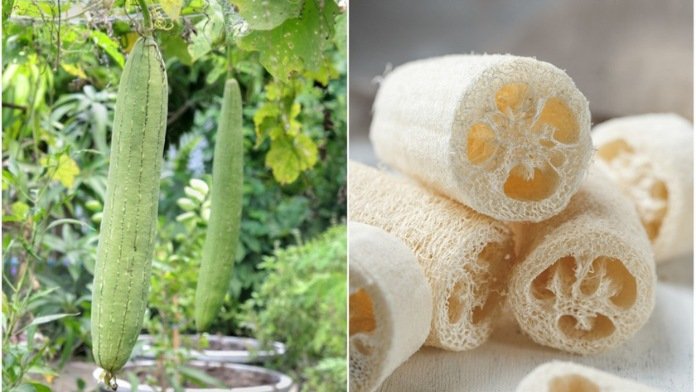
Bitternut Hickory Seedling is a deciduous tree, medium to large in size, with hard wood. It grows best in medium to moist, well-drained soil. Provides food and shelter for birds, insects and wildlife. Full sun to partial shade. Does not tolerate total shade.
Have you ever thought of growing your tree? If you love nature, try planting a bitter walnut! It’s a familiar name, but don’t worry; I will explain everything to you step by step. You’ll learn what a bitter walnut tree is, why it’s so special, and how to grow one at home.
What is a bitter walnut?
Bitter walnut is a tree that grows in the forests of North America. It is known for its strong wood and special nuts. Walnuts are called “bitter nuts” because they taste bitter and are not good to eat. But guess what? Squirrels and other animals love them!
The Bitternut Hickory Seedling grows very tall, sometimes up to 30 meters! Think how big! This tree can live for more than 100 years with its beautiful yellow-green leaves and strong branches. If you plant a bitter walnut seedling today, it can live for many years!
Why is bitter walnut special?
The forest has many trees, but the bitternut hickory seedling is unique. This is because:
Wildlife loves it
Birds, squirrels, and other animals eat bitter walnut nuts and use its branches to build their homes. When you plant a bitter walnut seedling, you help these animals find food and shelter.
Super Strong Wood
Bitter walnut wood is strong. People use it to make things like handles for tools and furniture because it doesn’t break easily. He is like a superhero of nature!
Help the environment
Trees like bitter walnuts help clean our air. They absorb carbon dioxide (a type of gas) and release oxygen. So, by growing a bitter walnut seedling, you are helping the earth!
How to grow your bitter walnut seedlings
Now that you know why bitter hickory trees are so special, let’s learn how to grow one! It’s easy and fun, and you can do it with a little help from an adult. These steps are:
Find the right place.
Bitternut hickory Seedling need space to grow big and strong. Find a sunny spot in your backyard or garden. The location should have enough room for the plant to spread as it grows taller. Remember, these plants can be very large!
Get the seeds or saplings of a bitter walnut.
You can find bitter walnut seeds in the wild or buy a bitter walnut seedling from a plant nursery. A seedling is a young tree that has already started to grow. A seedling may be easier to use because it is already on its way to becoming a large plant.
Plant seeds or seedlings
If you have bitter hickory seed, plant it about 1 to 2 inches deep. If you have a bitter walnut seedling, dig a hole big enough to hold its roots. Place the seedlings in the hole and cover the roots with soil. Be sure to press the soil around the base gently.
Water your plants
Water is very important for all plants, especially new seedlings. After planting your bitter walnut seedling:
- Give it plenty of water.
- Keep the soil moist but not too wet.
- Water it regularly, especially if it has been a while since it has rained.
How to care for a bitter walnut seedling
Select the correct location.
The first step in caring for your bitter walnut seedlings is planting in the right spot. Bitter almonds need lots of sunlight to grow well.
Choose a location that gets at least six hours of sunlight each day. The soil should be well drained but hold enough moisture to keep the roots hydrated.
Tip
Bitternut plants can get very tall and wide, so ensure they have enough room to spread their branches and roots as they grow.
Water your plants
Water is essential for the growth of any plant, especially a young seedling. When you first plant your bitter walnut seedling, water it thoroughly to help settle the soil around the roots. After that, keep the soil constantly moist but not wet. Water the seedlings regularly, especially during dry periods.
How Much Water?
Test the soil moisture by inserting your finger about an inch into the soil. If it feels dry, it’s time to water. If it looks damp, wait a day or two before testing again.
Avoid overwatering
Too much water can cause root rot. Ensure the soil drains well so water doesn’t pool around the roots.
Mulching to control moisture and weeds
Mulching is a great way to care for your bitter walnut seedlings. A layer of mulch around the base of the seedling helps retain moisture, keeps the soil cool, and prevents weeds from growing. Weeds can compete with your forage for nutrients, so keeping them at bay is essential.
What to use? Organic mulches such as shredded bark, wood chips, or compost work best. Spread a 2- to 3-inch layer around the sapling, but keep it a few inches away from the trunk to prevent rotting.
Fertilization for growth
Although bitter walnuts require relatively little maintenance, providing extra nutrients can help your seedlings grow faster and stronger. Fertilizing your bitter walnut seedlings in the early years can provide essential nutrients that may be lacking in the soil. When to Fertilize?: Fertilize in early spring when plants are growing. Use a balanced, slow-release fertilizer made for plants.
How to apply
Follow the instructions on the fertilizer package and do not over-fertilize, as this can damage the seedlings.
Prune for health and shape
Pruning helps bitter walnut seedlings develop a strong, healthy structure. Although these plants do not require much pruning when young, removing dead, diseased, or damaged branches is important for healthy growth.
How to prune
Use clean, sharp pruning shears to cut dead or cross branches. Prune in late winter or early spring before plants start growing again.
Fun facts about the bitter walnut tree
Hairy Bark: As bitter walnut trees age, their bark appears hairy and rough. Some think it’s a fluffy dog!
Colored leaves: In autumn, a bitter walnut tree leaves turn bright yellow. It’s like a blast of sunshine in your garden!
Nutty Smell: The bitter walnut tree has a unique nutty smell. Some say it smells like mustard!
Perfect for campfires: Bitter hickory wood is excellent because it burns hot and lasts long. It also gives off a delicious smoky flavor, ideal for roasting marshmallows.
Why you should plant a bitter walnut seedling
Planting a bitter walnut is not just about growing a tree; It’s about helping the environment and providing a home for wildlife. You can take pride knowing you’ve created something that will last for generations.
When planting bitter walnut seedlings
Helpful Animals: Birds, squirrels, and other animals need trees for food and shelter.
Cleans the air: Trees help clean the air, making breathing easier.
Creating beauty: A tall, sturdy tree makes any backyard or garden look more beautiful.
Common pests of bitter walnut seedlings
Several pests can affect bitter walnut seedlings. These are the most common to pay attention to:
Walnut bark beetle
Description: The walnut bark beetle is one of the most damaging pests of walnut trees, including bitter walnut seedlings. These tiny insects burrow into the bark of plants, creating tunnels that disrupt the flow of nutrients and water.
Signs of infection: Look for small holes and saw-like material in the bark around the base of the plant. Leaves may turn yellow or brown and fall early.
Management:
- Prune and destroy infected branches to prevent spread.
- Keep the plant healthy by watering it regularly and fertilizing it if necessary, as healthy plants are more resistant to insect attack.
- In severe cases, consider using insecticides, but always follow expert instructions.
Nutmeg moth caterpillars
Description: The nutmeg moth caterpillar is a black and white hairy caterpillar that feeds on the leaves of nutmeg seedlings. Although beautiful, they can weaken the plant and eat large leaves.
Symptoms of infection: The leaves will have holes, and caterpillars will be on the leaves or branches.
Management:
- Remove caterpillars from plants by hand.
- Encourage the presence of natural predators, such as birds, in your garden.
- If the infestation is severe, consider using a natural insecticide such as Bacillus thuringiensis (Bt).
Aphids
Description: Aphids are small, soft-bodied insects that suck sap from leaves and stems. They can weaken the nutmeg plant by depleting its nutrients.
Symptoms of infection: Leaves may curl, turn yellow, or have a sticky residue (honeydew). Ants often breed aphids for their honey, so ant growth can also be a sign of aphids.
Management: Spray leaves with water to repel aphids. Introduce natural predators like ladybugs to your garden. For more significant infestations, you can also use insecticidal soap.
Walnut wee
Description: This small insect lays eggs inside hickory nuts. When the eggs hatch, the larvae feed inside the nuts, which can damage young bitter walnut seedlings that are just beginning to develop nuts.
Symptoms of infection: Nut pits or premature dropping from the tree.
Management: Rake and destroy infested nuts to prevent larvae from maturing into adults and continuing the cycle. Encourage the presence of natural predators in your garden.
leaf miner
Description: Leaf miners are larvae that bore holes in plant leaves, including bitter walnut seedlings. As they feed, they create tunnels that appear as wavy lines on the leaves.
Symptoms of infection: Leaves will have discolored streaks or spots. The damage is usually a cosmetic problem, but a severe infection can weaken a young seedling.
Management: Remove and destroy affected leaves. Encourage the presence of beneficial insects, such as parasitic wasps, to help control leaf mining.
Conclusion
Growing a bitter walnut seedling is a fun and rewarding experience. You will see some amazing growth before your eyes, and you’ll be helping animals, purifying the air, and making the world a little greener. Why wait? Start your tree-planting adventure today!
RELATED POSTS
View all


